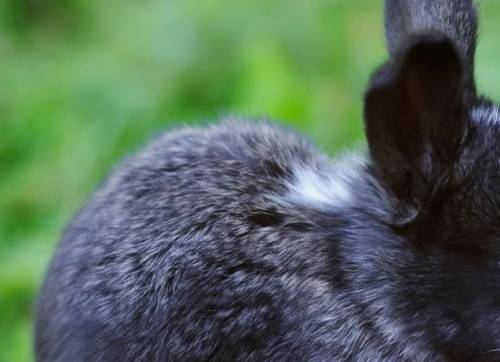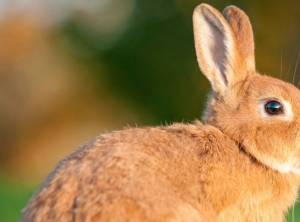The complex and highly specialized digestive system of the rabbit enables it to survive on a plant-based diet that is mostly comprised of grass and other fibrous materials. Maintaining the gut’s health and correct nutrition for the rabbits requires an understanding of their digestive system. As “hind-gut fermenters,” rabbits have an organ called the “cecum” that operates like the rumen of a cow and facilitates the digestion of fiber. High-quality fiber is essential for maintaining healthy microbial populations in the cecum, which promotes proper digestion and good gut health in rabbits.
Mouth
As it is in charge of dissolving fibrous plant components, the mouth is essential to the rabbit’s digestion. This guarantees that the remainder of the animal’s digestive tract can absorb crucial nutrients properly and efficiently. The rabbit’s mouth has several distinguishing qualities.
- specially designed teeth for breaking down fibrous materials like hay
- Saliva carries digestive enzymes that start digestion and aid in food’s breakdown, making it simpler to swallow.
- A tongue made specifically for gripping and handling food
Together, these specific elements enhance the rabbit’s general health and wellbeing by ensuring appropriate nutrient absorption.
Vestibule
An integral part of a rabbit’s digestive system, the vestibule is found in the mouth cavity. Between a rabbit’s exterior environment and its alimentary canal, it acts as a crucial point of interaction. The vestibule has a number of important features, including:
- Before food reaches the buccal cavity, acting as a buffer zone.
- Making sure that food is handled properly for effective decomposition
- covering the mucous-secreting glands on its mucous membrane to support efficient digestion and absorption procedures.
As a result, the vestibule is essential for starting the digestive process and ensuring that rabbits consume and process food in the best possible way.
Buccal cavity
The rabbit’s mouth, or buccal cavity, is an important part of its digestive system. The buccal cavity starts the digestion of food by housing several organs, such as the tongue and teeth. A fleshy, muscular structure called the tongue aids in manipulating and blending saliva with food. Its surface is covered in papillae of various sizes and shapes, which are crucial for taste perception.
The teeth of the rabbit are classified as incisors, premolars, and molars and have several roles. Food is chewed and chopped with incisors, while it is ground with the cheek teeth, which are made up of premolars and molars. Because of their open-rooted structure, continuously developing incisors are another distinctive trait. The lack of canines causes what is known as a diastema—a significant space—to appear between the incisors and cheek teeth. This means that the buccal cavity plays a critical role in breaking down and preparing food for future digestion in a rabbit’s digestive tract.

Pharynx
The pharynx is a vital component of the rabbit’s digestive system because it helps food move more easily from the mouth to the oesophagus. The effective breakdown of the food ingested by rabbits is facilitated by this muscle tissue, which is positioned posterior to the buccal cavity. The pharynx’s essential features include:
- contain mucous membranes on the inside, which lubricate and facilitate the flow of food.
- being close to the tongue, which helps with chewing and combining saliva for digestion.
- a direct link to the oesophagus that guarantees smooth food transmission for subsequent digestion in the stomach.
The pharynx basically ensures appropriate food breakdown and easy transport to succeeding organs, making it an essential part of the rabbit digestive system.
Oesophagus
An essential part of the rabbit’s digestive system, the oesophagus is in charge of moving food from the mouth to the stomach for further processing. The following elements are part of this process:
- Mucous membrane lining: To ensure that food travels down the oesophagus without difficulty, a mucous membrane covers the organ.
- The oesophagus is made up of muscles that contract and relax to drive food into the stomach.
- Pre-digestion phase: As food travels through the oesophagus, saliva combines with it to help break down food particles and get them ready for stomach digestion.
Conclusion: By efficiently conveying and pre-digesting food before it reaches the stomach, the oesophagus performs a critical function in starting the digestive process in rabbits.
Stomach
Because it is responsible for breaking down food through hydrolytic and enzymatic digestion, which includes acid and enzymes breaking down chemicals into smaller bits, the stomach is an important part of the digestive system of a rabbit. Given that they eat largely at dawn and dusk, which means that they are crepuscular animals, rabbits have unusually big stomachs that enable them to hold huge meals. Mucus, hydrochloric acid, and pepsin are a few of the main secretions produced by the stomach. Mucus is crucial for both moistening the meal to facilitate digestion and shielding the stomach lining from acids and enzymes.
Small intestine
As it is in charge of the absorption and digestion of nutrients from proteins, carbohydrates, and starches, the small intestine is essential to the rabbit’s digestive system. Food meets enzymes that help break down these components as it moves from the stomach to the small intestine. The rabbits can use the nutrients from their high-fiber plant-based diet to the fullest extent possible because of this procedure. Maintaining overall rabbit health and development depends on the efficient operation of the small intestine. In order to guarantee optimal small intestine functioning and digestion in rabbits, a well-balanced diet including high-quality fiber sources is necessary.
Large intestine
As it is the principal location for breaking down and digesting fibers and carbohydrates, the large intestine of rabbits is vital to preserving their general health. Rabbits easily move food through their complete digestive system in around 19 hours because of their short GI transit time. A diverse microbial population found in the cecum, which is a portion of the large intestine, is crucial for appropriate digestion and good gut health. The proximal colon also divides food into digestible and indigestible components, allowing the rabbit to retain the beneficial fibers while excreting the indigestible components as fecal balls. Moreover, the big intestine helps the body absorb water, keeping rabbits healthy all around.
Rectum
The evacuation of indigestible waste and the creation of fecal pellets occur outside the rectum, which is a vital component of the rabbit digestive system. The colon removes the indigestible fiber as food moves through the digestive system, forming firm, rounded droppings as a result. The excretion of these feces as waste follows their passage through the rectum. Maintaining effective digestion and optimum gut health in rabbits requires a carefully balanced diet that includes high-quality fiber. In order to evacuate waste and have a healthy microbial community in the cecum, rabbits, who are hind-gut fermenters, depend on the rectum.
Anus
Coprophagy is a special and necessary component of the rabbit’s digestive system that is intended to breakdown fibrous plant matter effectively and extract critical nutrients. Rabbits efficiently recycle and use essential amino acids, vitamins, minerals, and volatile fatty acids originating from cecal fermentation by eating their nutrient-rich “night feces” directly from the anus. Although this extremely effective method may appear unpleasant to humans, it is necessary for the best possible health, development, and production in rabbits. They will remain healthy and happy as long as balanced food is provided and their digestive system is understood.





